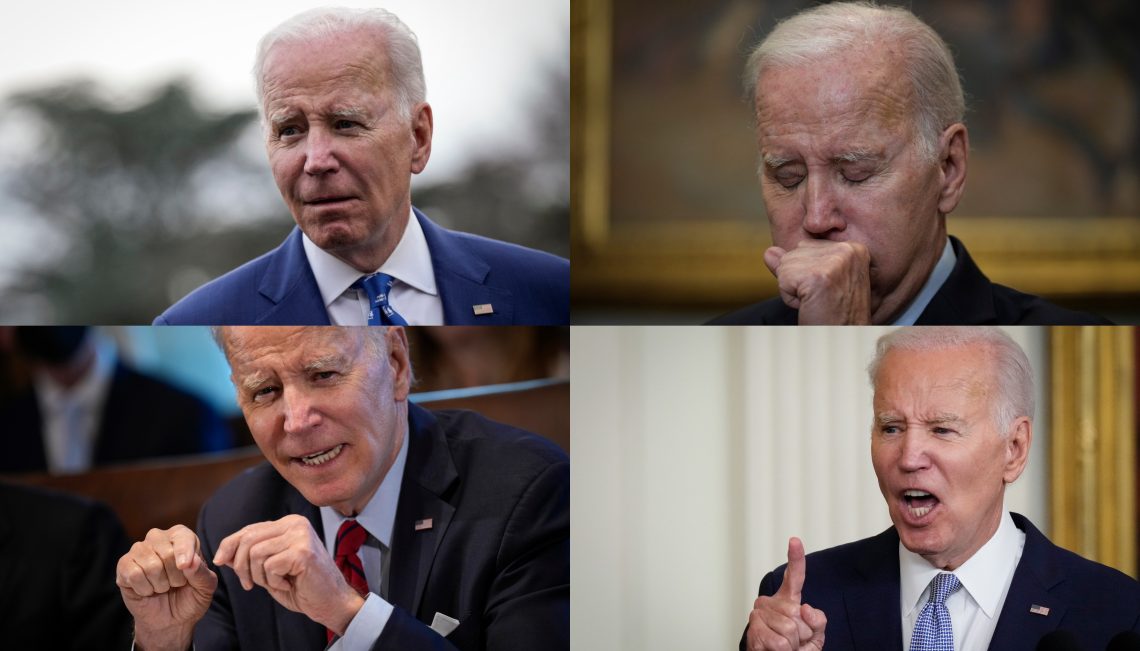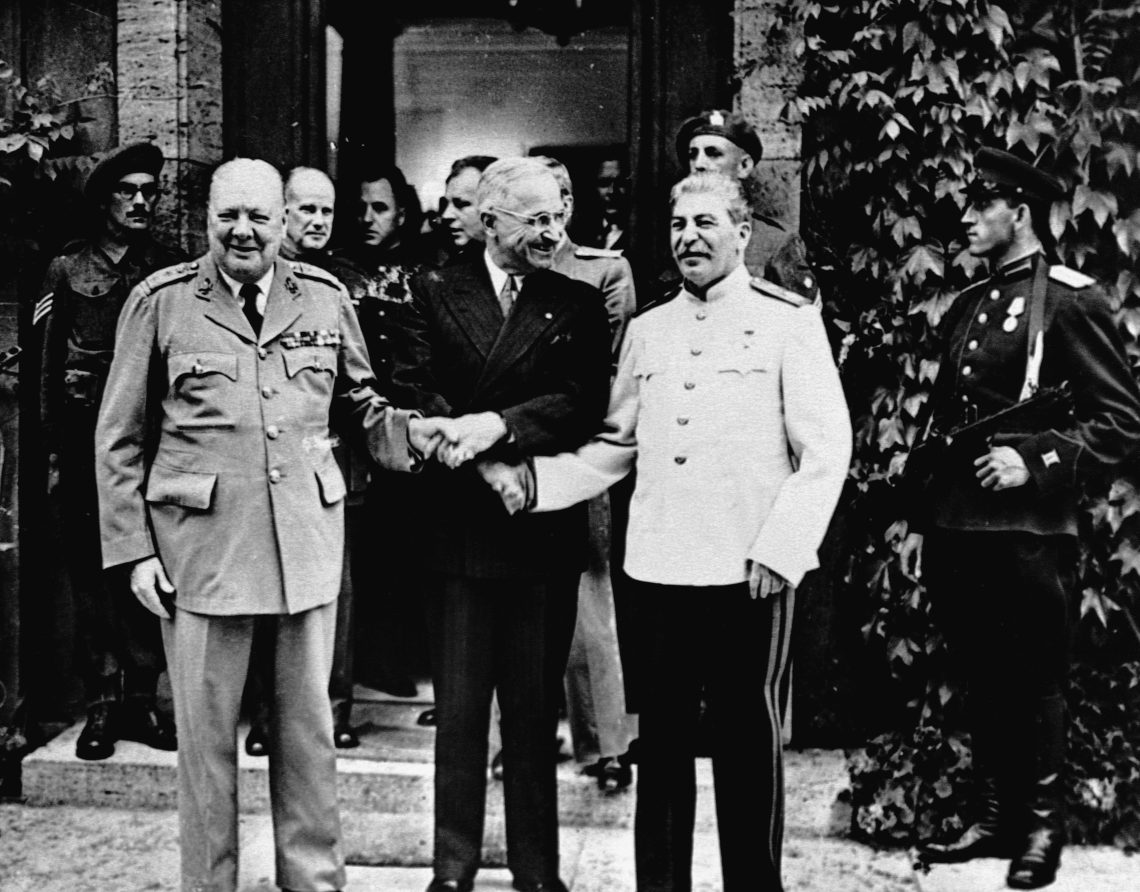Is there a Biden doctrine?
Rather than being guided by an overarching strategy, the Biden administration’s policymaking is influenced by a broad range of factors.

In a nutshell
- Explicit doctrines are rare in American foreign policy
- The Biden administration has been inconsistent on several issues
- The president’s policies are determined by various factors
Despite having published a national security and a national military strategy during his two years in power, President Joe Biden does not seem to have a specific guiding presidential doctrine. Rather, his statecraft appears to be guided by a confluence of ideas and impulses that do not constitute a coherent stated principle of government policy. Nonetheless, they are useful for predicting the administration’s future actions.
Do American presidents have doctrines?
Certain American presidents have ruled according to grand strategies. President George Washington, for instance, stuck to the principle of “no entangling alliances” in the global conflict between Britain and France, which subsequent administrations generally upheld throughout the early 19th century. For a long period in the 19th and 20th centuries, American presidents generally adhered to the strategy of hemispheric defense. During the Cold War, administrations from President Harry Truman to President George H.W. Bush practiced some form of containment. The inconsistency post-1989 is partly because the U.S. lacks a broadly accepted bipartisan grand strategy.
Even presidents with clear doctrines were not always able to uniformly ensure that execution conformed with their concepts
American presidents as a rule do not articulate governing doctrines for foreign and defense policy. For instance, President James Monroe’s famous 1823 Monroe Doctrine was not intended as a doctrine per se, but as a specific policy statement in a routine annual message delivered to Congress. Likewise, the Truman Doctrine of 1947 was never intended as an overall strategy for managing the Cold War, nor was it implemented as such. Some presidents, for example Jimmy Carter, laid out doctrines but did not actually implement them.
Presidential doctrines are more the exception than the rule. This is not surprising, given that federal power is divided among three branches of government containing a broad range of views. There is no U.S. tradition of rigorous doctrinal approaches to federal governance.
Even when American presidents advance doctrinal proposals, these are seldom fully articulated. Rather, they are deduced from consistent actions, policies and writings over time. By this standard, few presidents’ actions consistently conformed to an articulated doctrine. President Abraham Lincoln did unquestionably govern under a doctrine aimed at preserving the federal union. In modern times, Dwight Eisenhower, Richard Nixon and Ronald Reagan all had specific foreign policy doctrines.
That said, even presidents with clear doctrines were not always able to uniformly ensure that execution conformed with their concepts. Eisenhower, for example, as part of his “hidden hand” presidency did not fully publicly disclose his strategy. Nixon routinely clashed with his Secretary of Defense Melvin R. Laird. Secretary of Defense Casper Weinberger and Secretary of State George Schultz had sharp disagreements with President Reagan and his National Security Council staff.
Is there a clear Biden doctrine?
There are inconsistencies in President Biden’s actions that raise serious doubts over whether the administration is governed by a consistent policy.
For instance, support for Afghanistan and Ukraine were both U.S. interests. Yet, the administration executed dramatically different policies. Moreover, the Biden administration has identified working with allies as a hallmark of U.S. foreign policy, yet the Inflation Reduction Act, which was supported by the White House, angered many European allies who protested that they were not consulted and that the law introduced punitive, discriminatory nontariff barriers.

Nor do President Biden’s written strategies reflect a clear doctrinal concept. Published over a year and a half into the president’s term, the documents reflect a long laundry list of ongoing activities and aspirations. They are descriptive, not prescriptive, and do not reflect a coherent strategy.
What drives the Biden administration’s decision-making?
Clearly, there are several forces and processes that appear to influence President Biden’s policymaking, rather than one single policy doctrine.
Political objectives
The administration has a clear tendency to prioritize foreign matters that conform with its domestic agenda. This is certainly the case for climate policy, social issues and fighting “threats to democracy.” Support for a global minimum tax is another example. In each case, foreign policies are an extension of domestic policies.
Competing interests
In several notable cases, policies reflect diverging views within the administration. Most notably, for example, U.S. Presidential Special Envoy John Kerry has argued for accommodating China to promote cooperation on climate change. Others call for a more confrontational policy. As a result, U.S. policy contains an ambiguous mix of both approaches.
National Security Advisor Jake Sullivan and his supporters want to press Ukraine to make concessions to bring the war with Russia to a quick resolution. Others, including defense officials, stress mitigating the threat of Russia as much as possible. President Biden’s Ukraine policy reflects a middle course.
Also, contrasting factions are debating over the need to return to the negotiating table over the nuclear deal with Iran. As a result, the administration has no clear alternative policy to pursuing negotiations, no matter how futile they appear.
Presidential preference
President Biden’s long experience of public life has made him averse to high-risk approaches when it comes to foreign policy challenges. Mr. Biden famously opposed a military raid to kill Osama bin Laden in Pakistan. He supported the partition of Iraq to make a quick exit from the country. This aversion to risk also played a role in his decision to rapidly leave Afghanistan, since he feared the U.S. would become entangled in the Afghan government’s collapse. The president has also refrained from aggressively providing arms to Ukraine out of concern that this would be interpreted by Russia as an escalatory act and therefore trigger an expansion of the conflict.
One possible scenario for U.S. policy is that it will increasingly be shaped by allied policies, exploiting the administration’s preference for collective action.
Ideology
As a rule, most senior officials in the Biden administration prefer soft power (e.g., diplomacy and foreign aid) over hard power (e.g., use of military force and punitive economic sanctions), and try to rely on international norms and international institutions to mitigate national behavior. The administration places less emphasis on the protection of national sovereignty. Rather, officials believe U.S. interests can often better be safeguarded by collective action and initiatives in the general interest of humankind.
Domestic politics
Foreign policy is not the focus of the intense domestic political competition currently unfolding. As a result, the administration has generally ignored domestic debates on international matters. For instance, President Biden has not reacted to public opinion on Ukraine. In short, concern for voter support is not shaping foreign policy decisions.
Scenarios
Even though it lacks a guiding doctrine, the Biden administration’s decision-making is still relatively predictable.
One possible scenario for U.S. policy is that it will increasingly be shaped by allied policies, exploiting the administration’s preference for collective action. There have already been several examples of this trend. In Asia, for example, the administration lacks a clear preference and has been more willing to follow South Korea and Japan, which have been taking a harder line on North Korea. Similarly, the U.S. continues to support Ukraine because European capitals do so. In the future, nations that propose proactive measures, particularly when there is strong multinational consensus, are likely to shape U.S. policy.
A second possible scenario sees adversaries hamstringing the U.S. by targeting allied resolve, undermining consensus for action. If, for instance, Russia manages to dramatically divide NATO allies in their support for Ukraine, American policies would likely become more tentative.
A third scenario sees increased confrontation with traditional allies in cases where President Biden insists on pursuing policies that reflect domestic priorities. The U.S. has already experienced such friction in dealing with Israel and Saudi Arabia.
A fourth, highly disruptive, scenario would be international initiatives that clash with U.S. policy preferences for both domestic and global consensus. For example, a significant disagreement over the transition to a green global economy could have such an effect.
Absent major external influences, the likeliest scenario is that U.S. foreign policy will remain mostly unchanged.







